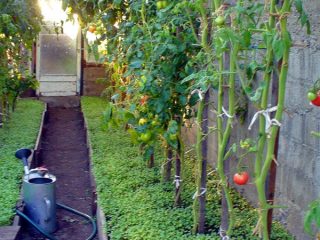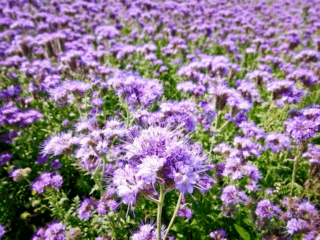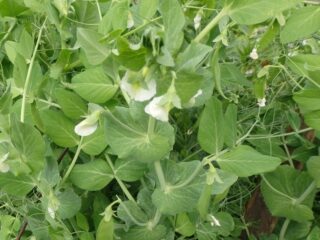Content
- 1 Which phacelia is best used as green manure?
- 2 Advantages and disadvantages of phacelia as green manure
- 3 On what soils is it used?
- 4 What to plant after phacelia next year
- 5 Growing methods
- 6 How to sow phacelia as green manure for the garden
- 7 Further care
- 8 How long does phacelia grow as green manure?
- 9 When to remove green manure phacelia
- 10 When to bury phacelia green manure
- 11 Conclusion
- 12 Reviews on the use of phacelia as green manure
Phacelia as a green manure is in great demand among gardeners. The plant improves the composition of the soil and does not require complex care in itself.
Which phacelia is best used as green manure?
Any phacelia can be used as green manure on the site. But the most popular is the tansy variety - an annual plant with a straight stem up to 1 m in height and numerous side shoots. The leaves of the phacelia are pinnately dissected, large, the buds are blue-lilac, bell-shaped, united in corymbose inflorescences. The fruits look like round capsules with dark brown wrinkled seeds.
Tansy phacelia is characterized by rapid growth and cold resistance, suitable for planting before and after any crops. Additionally, the annual plant protects the area from the appearance of weeds, as it suppresses their growth.
Advantages and disadvantages of phacelia as green manure
Green manure tansy phacelia has numerous advantages. In particular:
- reduces soil acidity and brings pH closer to neutral;
- prevents the growth of wheatgrass and other weeds on the site;
- saturates the soil with easily digestible nutrients;
- loosens the soil with its root system;
- releases bactericidal substances into the soil and protects plants from fungi and infections;
- repels pests from the garden;
- It develops very quickly and is suitable for replanting throughout the season.
The annual plant can be used not only as green manure, but also as a forage crop. The plant is readily eaten by rabbits, goats and cows.
The benefits of phacelia as a green manure are not unconditional - it also has certain disadvantages. The latter include:
- weak branching of the root system;
- useless against some weeds;
- small amounts of nitrogen released into the soil.
The advantages of the culture outweigh the weaknesses, which is why phacelia is very popular as green manure.
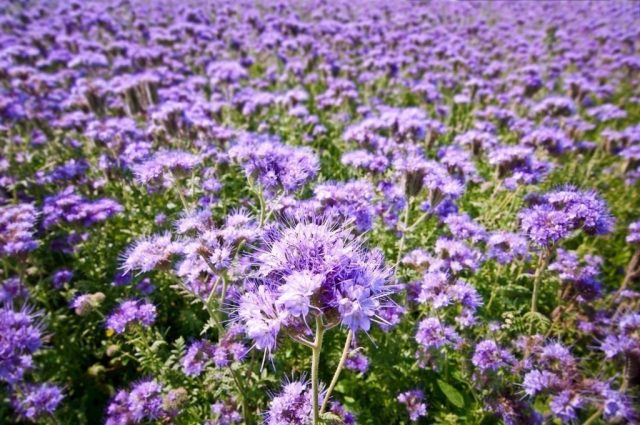
The advantages of phacelia include its decorative effect - it blooms profusely and decorates the area
On what soils is it used?
Planting phacelia in the spring as green manure is allowed on any soil. The annual grows well on poor soil, easily tolerates waterlogging and drought, and develops in the sun and shade. It can be planted on black soil and sandy and rocky areas.
The plant brings the most benefits on heavy and dense soils with an acidic reaction. The annual plant brings the pH closer to neutral and saturates the soil with nutrients. Green manure roots improve the looseness of the substrate and provide good water and air permeability.
What to plant after phacelia next year
You can sow phacelia as green manure in spring or autumn to fertilize the soil for any crop. But the annual plant brings the best effect if planted in front of:
- potatoes;
- tomatoes and cucumbers;
- cabbage;
- melons;
- raspberries and strawberries.
Phacelia is not related to any fruit or vegetable plants and does not share any diseases or pests with them. This makes the annual plant a very profitable green manure - when using it, you don’t have to worry about the development of dangerous fungi in garden crops.
Growing methods
The agricultural technology for growing phacelia green manure suggests using the annual crop in several ways:
- To enrich the soil. If the land is severely depleted, then, in principle, it is not worth planting vegetable and fruit crops on it during the season. It is better to sow the area with phacelia 3-4 times in a row. Green manure is mowed before flowering and the green mass is left to rot, and then the seeds are replanted.
- As an intermediate plant. In this case, phacelia is sown in early spring immediately after the snow melts. The annual plant has time to get stronger until May. At the budding stage, it is mowed and the stems are used as a mulch layer. To enrich the soil, green manure can be sown again at the beginning of autumn.
- As a honey plant. The annual attracts bees and other beneficial insects, so it makes sense to plant it in the area to improve plant pollination. Sowing between rows of vegetable crops is especially beneficial.
Because grass prevents weeds from growing in the area, it can be planted under trees, in flower beds, and next to shrubs.Green manure quickly takes over free space, but is easy to cut.
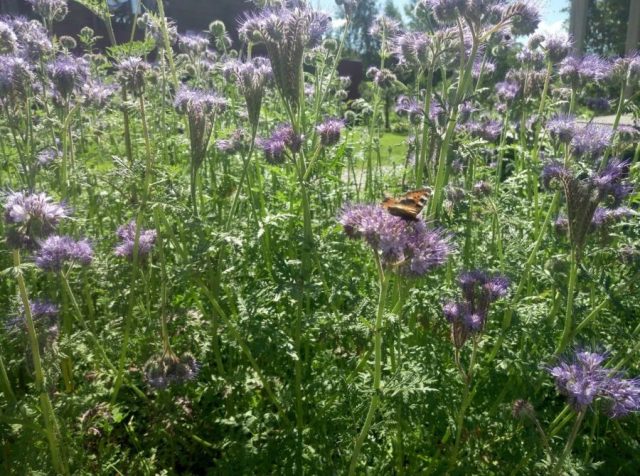
Phacelia provides good shade on the site, so it is often planted to protect vegetable seedlings from sunlight
How to sow phacelia as green manure for the garden
Sowing phacelia manually in the spring on green manure is quite simple. First of all, you need to purchase crop seeds. When purchasing, you need to ensure that the material is fresh enough and retains maximum germination.
The annual plant germinates very quickly and easily, so no preliminary stratification is required. Sowing the crop is performed as follows:
- The area for green manure is prepared in advance - loosened to a depth of about 5 cm and thoroughly moistened.
- Mix the seeds with coarse river sand to ensure more uniform sowing.
- Scatter planting material over the surface of the soil.
- Using loosening, embed approximately 3 cm deep.
- Water the soil properly or irrigate it generously with lukewarm water from a spray bottle.
If high-quality seeds are used, phacelia will germinate in an average of 10-14 days.
When to sow phacelia as green manure
The time for planting phacelia green manure depends on the climatic conditions of a particular region. In early spring, annuals are sown immediately after the snow melts. The soil should thaw and warm up slightly. There is no need to wait for stable heat - the plant tolerates frosts down to -9 ° C and retains good germination.
You can replant the annual in the second half of summer - at the end of July or at the beginning of August. Sowing is carried out after harvesting the first wave of vegetable and fruit crops. Green manure seeds are planted in the vacated soil immediately, without waiting for weeds to appear.In September, the green mass is mowed and embedded in the ground.
It is also allowed to sow phacelia as green manure in the fall. Planting is carried out a couple of months before the first frost, so that the annual plant has time to produce more green mass. Sowing just before the cold weather is also possible, but in this case the crop will germinate only in the spring.
Sowing rate of phacelia per hundred square meters as green manure
To properly use phacelia as green manure, it is necessary to comply with sowing norms per 100 m2. If the soil is fertile enough, it is enough to plant only 60-80 g of seeds. On poor soil, at least 100-120 g of grains are sown per hundred square meters.
Further care
After the spring sowing of phacelia as green manure, it is necessary to provide the crop with basic care. The annual plant is very unpretentious, but it is still necessary to pay attention to the main points:
- Watering. Providing the plant with abundant moisture is required in the first stages of development after planting. For irrigation, use a lukewarm settled liquid with a soft composition; water is added in the morning or evening. If the soil is already well moistened after the snow melts, you can refuse the procedure. Also, watering is not carried out during periods of heavy rain, since the plant reacts poorly to waterlogging of the soil.
- Feeding. The annual plant is able to develop well even on poor soil, however, for the most abundant growth of green mass, it is recommended to feed the crop with mineral and organic fertilizers from time to time. You can use the drug Baikal EM-1 and similar ones, as well as a green herbal infusion, which contains all the main beneficial substances. Fertilizers are applied once every two weeks at the root, the procedure is carried out in the absence of bright sun.
- Loosening.In order for the annual green manure plant to grow faster, it is recommended to regularly turn the soil on the site with a rake to increase air permeability. In this case, you need to loosen the soil to a shallow depth of 3-5 cm. The root system of the annual plant is located close to the surface; if the feeding shoots are damaged, the crop will slow down its development.
Phacelia displaces weeds, so the plant is usually not weeded. But if self-sowing grasses have spread throughout the area, they should be pulled out of the ground manually.
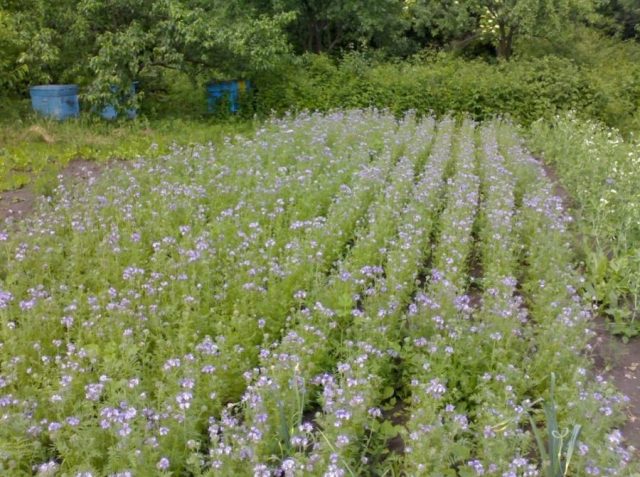
Phacelia does not require protective treatments, as it independently resists infections and parasites
How long does phacelia grow as green manure?
The weed control plant phacelia goes through a full development cycle in an average of 2-2.5 months. The first green shoots, under favorable weather conditions, appear within a couple of weeks after sowing the seeds in open ground.
After another 40-45 days, the culture begins to produce buds. At this point, it is recommended to mow the grass or dig up the area along with green manure.
When to remove green manure phacelia
It is recommended to remove annual plants when planting as green manure just before flowering begins during the budding period. You should not leave the crop on the site for several reasons:
- Shoots and leaves become coarser during the flowering period. Subsequently, after embedding in the ground, the green mass will rot more slowly.
- At the budding stage, the annual plant contains the most nutrients. Opening flowers and ripening seed pods take on some of the beneficial compounds. In this case, the effectiveness of green manure decreases.
- If you leave the crop on the site longer than the recommended period, the plant’s seeds will begin to ripen.Some of them may get into the ground, and the phacelia will begin to spread throughout the garden like a weed.
When sowing in mid-April, green manure can be mowed already in the first ten days of June. Vegetable or fruit crops are planted in the vacant space. If the soil on the site is poor, you can re-seed the garden with green manure a couple of weeks after harvesting the first wave of green mass.
When to bury phacelia green manure
Phacelia grows quickly as green manure in spring and rapidly decomposes in the soil after mowing. It is recommended to use green mass on the site immediately after harvesting the grass. Stems and leaves are used mainly in two ways:
- Scatter over the soil surface after planting cultivated plants. In this case, phacelia acts as mulch, slows down the evaporation of moisture from the soil and prevents the germination of weeds. In addition, the layer of grass prevents the root system of the seedlings from overheating under the sun.
- Embedded in the soil. The beveled stems can be buried shallowly in the soil and watered abundantly. In this case, the green manure will immediately begin to decompose and release nutrients to the earth.
Some gardeners use mowed phacelia to prepare a green infusion - a homemade organic fertilizer.
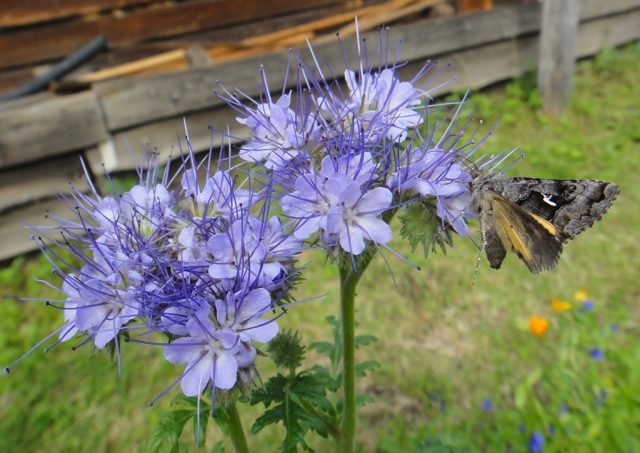
Several phacelia bushes can be left on the site after flowering begins for harvesting seeds.
Conclusion
Phacelia as a green manure is characterized by rapid growth and unpretentiousness, has a very beneficial effect on the soil and inhibits the development of weeds. The crop does not require complex care; the mown green mass can be used universally.
Reviews on the use of phacelia as green manure
